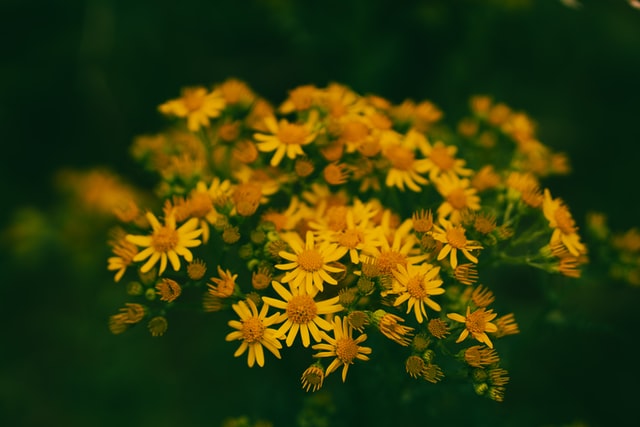A home without a garden is like a… Okay, we’ll stop right there. There’s really no need to start an article in that manner. You’ve seen that intro a million times before. Although we don’t have a clear idea of how to introduce this article, we know how important a garden is to a person’s well-being. Green rests the eyes, right? Since you’re reading this, there’s a fair chance you are considering moving your garden soon.
Are you wondering what to do with your garden plants? Don’t have an idea on how to move them also? Rest assured, you’ll know everything about relocating your garden by the end of this text. Below you’ll find a guide to moving your garden. You can do it without having to endure any stress. Stay tuned to see how.
Mind the Seasons When Moving Your Garden
Choosing the best season for this kind of ordeal is the easiest task on this list. The least you can do is to avoid the worst season for your garden relocation. Do you know which season is that? Take a guess. That’s right, it’s summer! That wasn’t a tough question, wasn’t it? Extreme temperatures during the summer months can easily harm your loved plants. Even though it gives life to every living being, the Sun can be your worst enemy! Picking out any season other than summer should be alright. Don’t worry if you don’t have the luxury to choose the season when you’re moving. It’s not the end of the world. In this guide to moving your garden, we’ll show you how to do it with ease, even in weather conditions that aren’t too good for your plants.
If you have the luxury, avoid moving during the summer. Extreme temperatures can damage your plants.
Have Everything Dug Out and Ready in Your New Garden
 The best way to ensure problems won’t come up while relocating your garden is to plan ahead. Scan your new garden and mark what goes where just so you don’t arrive with your plants unprepared and pretty confused. Get your garden tools into action! Also, your garden is not just your plants. It’s your tools, too. Are you wondering how to pack them? We’re sure you want to learn about the best way to do it, so we’ll give you some hints. Firstly, clean the tools. God knows how well we take care of our garden tools… Yes, that’s right. We usually don’t clean them thoroughly after our garden choirs. Now’s your chance! Also, obtain necessary packing supplies. You can get boxes for free by asking your local shopkeeper.
The best way to ensure problems won’t come up while relocating your garden is to plan ahead. Scan your new garden and mark what goes where just so you don’t arrive with your plants unprepared and pretty confused. Get your garden tools into action! Also, your garden is not just your plants. It’s your tools, too. Are you wondering how to pack them? We’re sure you want to learn about the best way to do it, so we’ll give you some hints. Firstly, clean the tools. God knows how well we take care of our garden tools… Yes, that’s right. We usually don’t clean them thoroughly after our garden choirs. Now’s your chance! Also, obtain necessary packing supplies. You can get boxes for free by asking your local shopkeeper.
Moving your garden doesn’t involve just transferring the plants. Don’t forget about your gardening tools!
Reduce the Transplantation Shock as Much as You Can
Now, we’ve come to the main issue of this guide to moving your garden: What can you do to minimize the shock of transplantation? There’s a number of ways you can make sure your plants go through relocation stress-free.
1 – Water the plants just before moving
On the day before the move, water the plants so they stay hydrated during the course of your relocation. Soak the soil in water as much as possible because you want the roots to get some much-needed energy for the trip.
2 – Transporting bare-root?
If so, make sure you soak the roots in water for a couple of hours before you go ahead and replant them.
3 – Choose the right time
The best time of the day to replant your garden might be the evening hours, especially when you’re transplanting small seedlings. Your plants will have a whole night to get adjusted to their new surroundings before being exposed to the Sun, which is very important for their well-being.
4 – Water the holes
Just before you plant one of your green friends, make sure the hole you’ve dug out is saturated enough. Basically, the soil needs to be turned into mud. Also, don’t do it in one take. Firstly, plant the lower part of the roots and add some water. Afterward, put the rest of the soil in the hole and water it again.
Make sure you water the holes you’ve dug out before transplanting. That way, the roots will get enough time to adjust.
5 – Water the whole plant, again
Okay, so this might sound a bit too much, but you’d be surprised how much water the plant can lose during the transplantation process. We know how easily people lose water during hard work on sunny days. Of course, we can always hire someone who’ll sweat instead of us. If you’re having any troubles during the moving day or the preparations before, check out Master Moving Guide. There you’ll find some helpful tips on how to move like a boss.
6 – Shield your plants, if possible
If you have the time and energy, it’s for the best you somehow shield your plants from direct sun for 3 to 5 days. Maybe using a wooden plank will do the job. Anyway, it’s alright even if you don’t do this.
After the Transplantation
Let’s say you’ve finished the transplantation process. The job’s not over yet. You’ll need to carefully watch your plants adjusting to the new place. Water them once or twice a day. The bigger the plant – the more water it requires. Also, check the soil for dryness whenever you can. We’re not talking just about the surface. Check few inches below it. If it’s possible, keep your plants out of the path of direct sun. Hopefully, by doing everything we’ve mentioned above in the article, you won’t have any problems after the transplantation is over. Although you should sometimes expect the unexpected, so it’s best to be careful and patient with your plants.
 The Takeaway on Moving Your Garden with Minimal Disruption
The Takeaway on Moving Your Garden with Minimal Disruption
So, that was that. This was a quick guide to moving your garden. As we’ve mentioned earlier: if you do everything on this list, there’s a good chance your plants will relocate without having to endure much unnecessary stress. You don’t have to be an expert to figure out it’s very unhealthy for them to go through such a process unprepared. It’s basically the same as it is with humans. Of course, the plants deserve more attention. We’re pretty used to being unprepared, but they could easily die if left in the hands of lazy gardeners, unwilling to go through all preparation stages. Anyway, we’re sure you’re not one of them.

